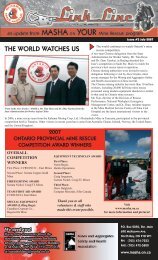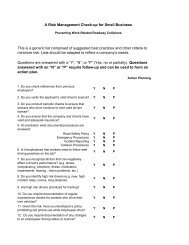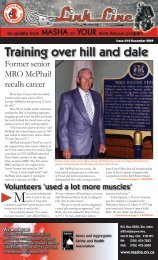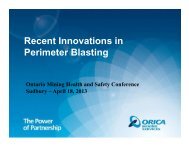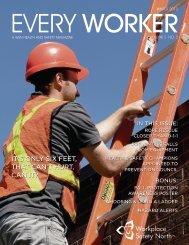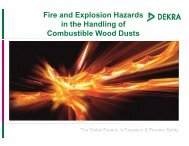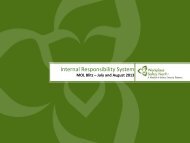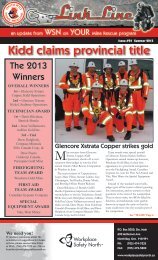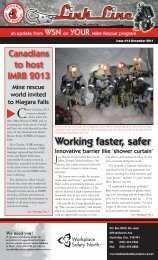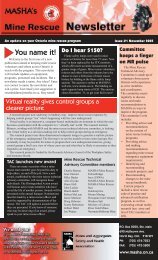Bulldozer Operator
Bulldozer On-Site Orientation - Workplace Safety North
Bulldozer On-Site Orientation - Workplace Safety North
- No tags were found...
Create successful ePaper yourself
Turn your PDF publications into a flip-book with our unique Google optimized e-Paper software.
BULLDOZER OPERATOR<br />
CONDUCT CIRCLE CHECK<br />
Performance Objective<br />
Perform visual and operational checks of attachments, ensuring that all attachments are lowered<br />
to the ground or in the rest position and the machine is properly shut down prior to initiating the<br />
circle check procedure. All substandard conditions and problems must be reported to the<br />
immediate supervisor. The circle check must be conducted at the beginning of each shift.<br />
NOTE: <strong>Operator</strong>s must have proper out-of-the-cab PPE e.g. - safety boots laced to the top, hard<br />
hat, high visibility vest or clothing, as well as hand, hearing and eye protection where required.<br />
Guidelines for Performance Objective:<br />
1. Cracks: Explain how to check and identify cracks and point out common locations where cracks<br />
may form (stress points). Point out that repairs must be done as soon as possible to prevent costly<br />
breakdowns and to prevent even further damage or the potential of injury to the operator and<br />
others.<br />
2. Leaks: Show the locations where leaks (hydraulic fluid, brake fluid, fuel) can occur. Explain that<br />
leaks can lead to further more serious problems, cause fires or damage the environment. Leaks can<br />
also cause slip and fall injuries to operator and others due to fluid on machine. Explain the danger<br />
of checking for leaks where fluid is under high pressure (e.g. hydraulic fluid) and the proper<br />
method for checking.<br />
3. Grease fittings: Identify the location (including remote connections), condition and purpose of<br />
grease fittings as described in the routine maintenance section of the owner’s manual. Check to<br />
ensure they are in good condition and connected properly. Excessive grease build-up should be<br />
cleaned regularly to prevent the potential of slips and falls and fire.<br />
4. Tracks, pads and pad bolts: Ensure adequate tension and proper adjustment of the tracks. Check<br />
for loose, worn, damaged or missing pads, bolts, grousers, idlers and main pins. Examine the<br />
condition of pins and bushings including the locking device on pins and watch for signs of wear or<br />
breakage of pins and bushings.<br />
5. Tires, wheels, and chains: Explain the requirements for correct pressure, adequate tread, no<br />
punctures or defects, rim in good condition, cap on valve stem. Follow the manufacturer<br />
guidelines when inflating/deflating tires. Ensure that chains are properly installed and tightened.<br />
If too loose, debris can be caught in chains and thrown out with considerable force. Watch for<br />
excessive wear, missing or damaged clevis pieces or loose parts of the chain. Also check for<br />
loose or missing wheel lugs.<br />
6. Engine/manifold area: Check engine compartment and exhaust manifold/turbo for debris. Check<br />
and remove debris from engine compartment to reduce the potential for fire, pay particular<br />
attention to the manifold/turbo/radiator areas.<br />
7



